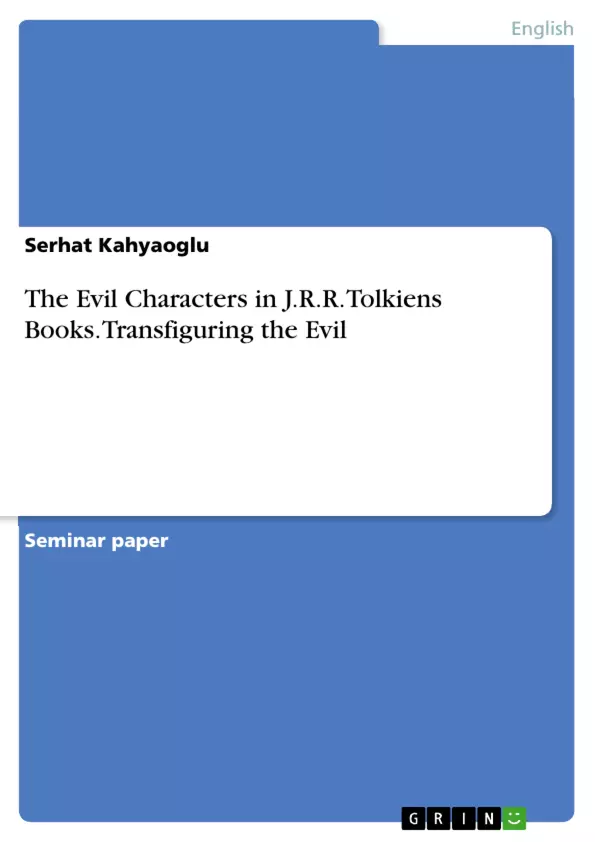The study provides its reader to have knowledge about J. R. R. Tolkien’s personality. After that, it helps his reader to understand the creation of Arda meaning the earth involving Middle-Earth. Moreover, the study mentions Tolkien’s sane solutions to the readers who have not read his books, offering the reader something familiar. It should be stated that Sauron and Melkor have different personalities and Tolkien differentiates the evil within it.
Tolkien, one of the most prominent authors of English literature, adds subtle details into his books to make the reader read his books more persuasively. He uses elementary pontifications about literature to go beyond the standard depictions without not crossing the boundaries. In this study, it is pointed out that Tolkien amasses lots of elements into his books. To illustrate, he includes a number of Christian elements in his book. It is highlighted that Tolkien pays attention to the depiction of his evil characters because of the fact that not only he does not want to create something unusual but he also wants to achieve the reader’s undivided attention. It is mentioned that Sauron and Melkor have different personalities and Tolkien uses different approaches for each of them. In addition, this study puts the One Ring and Man King’s into his aim to highlight Tolkien’s style.
Inhaltsverzeichnis (Table of Contents)
- Abstract
- Introduction
- Ainulindalë and The Creation of The Middle-Earth
- Tolkien's Stylistic Approach to the Evil
- Sauron's and His Servants' Analysis
- Conclusion
- Works Cited
Zielsetzung und Themenschwerpunkte (Objectives and Key Themes)
This study analyzes the stylistic approach J.R.R. Tolkien uses to depict evil characters in his works, particularly in The Lord of the Rings and The Silmarillion. It focuses on how Tolkien transcends traditional portrayals of evil by presenting complex, nuanced characters with intricate motivations.
- Tolkien's Stylistic Depiction of Evil
- The Influence of Christianity on Tolkien's Works
- The Creation of the Middle-earth and the Battle Between Good and Evil
- Analysis of Sauron and Melkor
- The Role of the One Ring
Zusammenfassung der Kapitel (Chapter Summaries)
- Abstract: This chapter provides an overview of the study, highlighting Tolkien's subtle details and his use of Christian elements in his work. It mentions the contrasting personalities of Sauron and Melkor and Tolkien's attention to their portrayal.
- Introduction: This chapter introduces J.R.R. Tolkien, his background, and his influence from Christian doctrine. It discusses the concept of evil in Tolkien's works, highlighting the idea of accepting someone's will as a form of evil.
- Ainulindalë and The Creation of The Middle-Earth: This chapter explores the creation of the Middle-earth through the song of creation sung by the Ainur. It emphasizes the theme of good and evil, the origins of Melkor's villainy, and Tolkien's use of medieval ideas about the origin of evil.
- Tolkien's Stylistic Approach to the Evil: This chapter analyzes Tolkien's approach to depicting evil characters. It focuses on how Tolkien portrays characters as initially good but gradually turning evil, integrating specific details and themes into their development. The chapter also discusses the origins of the One Ring and its significance.
Schlüsselwörter (Keywords)
This study focuses on the key concepts of J.R.R. Tolkien's work, including the stylistic portrayal of evil, the influence of Christianity, the creation of the Middle-earth, the characters of Sauron and Melkor, and the significance of the One Ring.
- Quote paper
- Serhat Kahyaoglu (Author), 2020, The Evil Characters in J.R.R. Tolkiens Books. Transfiguring the Evil, Munich, GRIN Verlag, https://www.grin.com/document/956538



